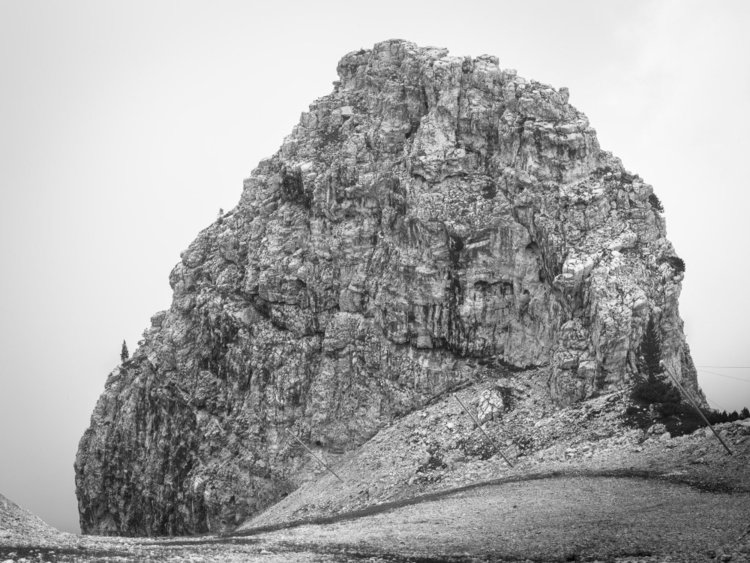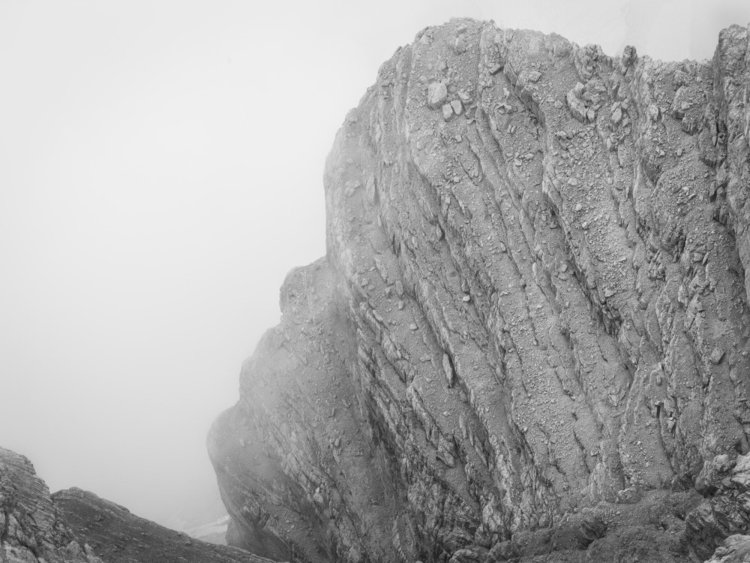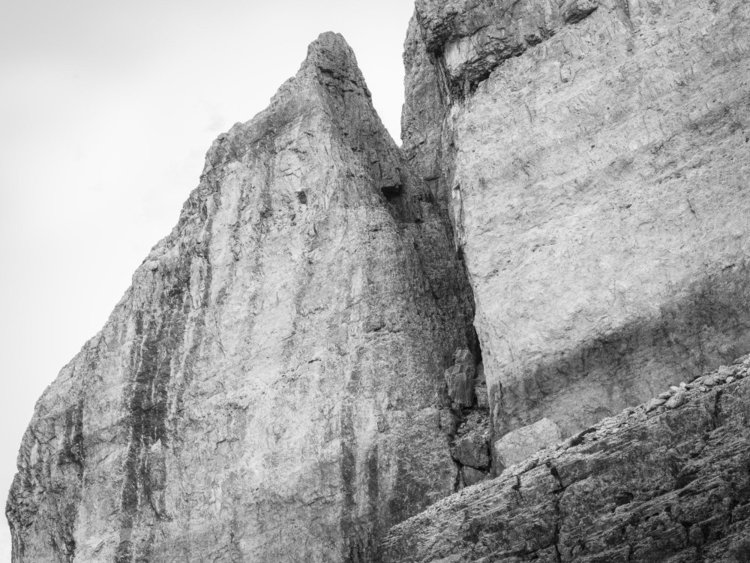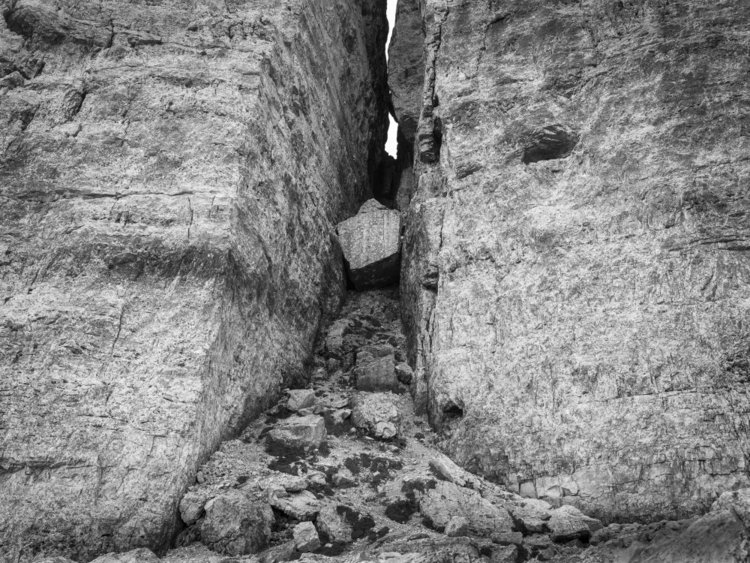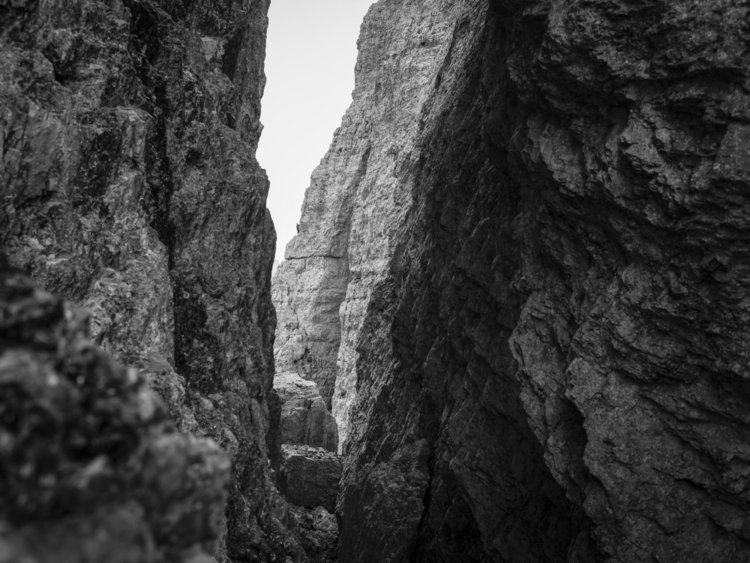DOLOMITES - N46 36 47 E12 9 47
BY ANDREA ALESSIO
Andrea Alessio (Venice, 1966) lives and works between Treviso and Venice. He studied Literature and Cinema at the Ca' Foscari University in Venice and afterwards continued studying photography with authors like Italo Zannier, Paolo Costantini, Gabriele Basilico, Jessica Backhaus, Guido Guidi, Silvia Camporesi, Joakim Eskildsen, Machiel Botman, Marco Zanta, Todd Hido, Pino Musi, Mark Steinmetz, Jason Fulford, Lucas Foglia.
His work has been exhibited, among others, by the gallery Il Diaframma for its 25th anniversary, by the Contemporary Art Museum in Bergamo and the Science Museum in Milan and more recently by private galleries in New York, San Francisco, Milano, Venice, Philadelphia, ecc. Andrea Alessio owns and runs a photographic studio (www.varianti.it). After a pause in his artistic career, he restarted focusing on more personal work in 2011.
synopsis
"ON EARTH AS IT IS IN HEAVEN"
I would like to introduce this new series of photos by Andrea Alessio dedicated to the Dolomites by appealing to axiom that photography is a philosophical practice. His exercise allows us competing critically with the exotic, or with what exists outside us. It is not only a technical ability, but also a thought instrument that we can apply to the reality and to our reflection training-ground. Consequently, the true discovery is not in the visible imagination we create, but in what it reveals to us of our mind.
The journey begun during the recent years by Andrea Alessio through his own “where”, coinciding approximately with that geographic region called Veneto, satisfies first of all this need to realize, to direct the mind in such a way to perceive better what is important for us. In this sense the journey is a re-birth path that can just start nearby, from what we do not see or we do not want to see anymore. In this sense, Andrea Alessio’s choice to start the re-discovery of his own ‘territory’ through the Christmas decorations and their unsuspectable shining a light in the dark of the most common places is brilliant. His patient night visions derive from this need to shine a light on his own experiences.
The following stages of this journey lead us from the Venetian plain with its factories and scattered houses, to the most solitary mountain landscapes, in which the relationship between solids and voids, between what is and what is not, is sharper and more marked in the photography, also for the use of black and white. In the infinite snows of Misurina, collected in the ‘Apollo 19’ album, in which Andrea Alessio sketches the features of a Martian space deceiving the reason by widening the borders; then in the ‘Vajont’, where he tries his “reconstruction”, by investigating not so much for the remains of the memory as the sensations before time, before that dramatic moment, October 9th, 1963, at 10.39 PM, sweeping away almost 2,000 people during the sleep.
The photographer reminds us for a moment, that the mountain, a symbol of union between sky and earth, does not always aid the awareness by the human being of his position in the universe.
Finally the Dolomites. The story highlights another basic element of the poetic view by Andrea Alessio. The distance or what I would call more philosophically the right measure. It becomes the interpretation necessary to open the project and to explain the relationship with the context. The author looks for an optimal scale to bring the mountain closer to its possible dimensions. Somehow, you perceive the desire to hide any reference from the observer. The message is clear: the mountain does not exist, just what we are able to grasp of it exists. Of course, the façade of the Dolomite peaks is hard, compact and impenetrable. This rock is so much that it seems to us that we may have it between the teeth and chew it. However, sooner or later, the details appear on the surface. A fir challenging the high altitude, a pole driven in the stone, a child climbing on his hands. Suddenly this uniform mass starts slowly to distinguish itself, to reveal its life, as if it were a projection of our same existence. As we gain confidence, it seems to us almost that we may own it. So, it can even happen that we joke by mistaking the face of one of these Dolomites for the profile of Garibaldi, Verdi or Karl Marx. This is of little importance. What is important is the effort taking us there. In all these works you breathe a great ground silence, necessary to think and to obtain suggestions from the inner whispers. It seems to me that Andrea Alessio has stopped to pursue the past. All his meetings with his “where” gives shape to a new personal interpretation. Light, space and time are words that the author makes vibrate to call the definition into question and to look for a meaning out of the pure objectivity. Now there is nothing we can do but wait for his descent from the mountain towards the sea.
Steve Bisson (Asolo, October 13, 2014)



